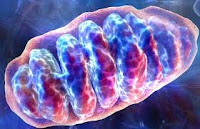Leucine & Leptin, Two "L"s for More Muscle & Less Fat? "I'll Get There, When I Can!" How Important is it to Stick to the Plan? Is Organ Growth Inevitable for the Big Guys?
Pain Research, Care, and Education. 2011). According to the latest data (2011) each US citizen is thus paying $2,000.00 to relieve the pain of 100 million chronic pain patients in the US alone.
Obviously you are not paying those two grands to your sick neighbor, directly. In fact, the $2,000 consist of the total incremental cost of health care due to pain which ranges from $261 to $300 billion and a $297-$336 billion "penalty" due to lost productivity (that's more than 2x more than the $147 economic costs of obesity; CDC data from 2008)... what? Now, you are in pain, as well? Ah, never mind. At least a few cents of the two grand are now going to be spend on yourself.
In the C57BL/6 mice the researchers used for their experiment, Mao et al. also observed significant reductions in plasma urea and protein degradation in skeletal muscle. What's also interesting is that both treating the mice with leucine and injecting them with leptin lead to similar increased weight of the gastrocnemius and soleus muscles in ob/ob mice (rodent model of diabesity). In that,
Now the bad news is that these results would suggest that both people starving themselves, as well as the victims of years of gluttony are not going to benefit from this synergy, because their leptin levels will either border zero (starvation) or the receptor expression will be so downregulated that even the 100% increase the researchers observed in the high leucine diet (compared to a high alanine diet) would not matter.
For the rest of us, it may yet be another research to keep an eye on the quality of each of the 30g+ protein servings you are supposed to have with every meal (learn why), after all you want your body to know that there is not need to store it as fat, don't you?
(Gentil. 2013) It should actually go without saying that showing up at every training session and sticking to a plan is the primary parameter of training success. Unfortunately, the camp of fitness and physique enthusiasts is a pack of notorious "I'll get there, when I can"-s, "Just another set"-s and "Rest days suck I'll just do some bicep curls"... we have been discussing the counterproductive effects of the two latter strategies, which will usually lead to overtraining often enough (read up on overtraining). What I am not so sure about, though is whether or not we have ever taken a look at whether there is actually good evidence that the former group, the "I'll get there, when I can"-s actually don't see the results they are striving for.
Against that background I decided to take the very recent publication of a paper by Paulo Gentil and Martim Bottaro as an incentive to pose the question: "Does sticking to the plan make a difference?" Ok, ok, it probably won't come as a surprise that those of the 92 resistance training noobs (21.7 ± 2.7 years; 175.4 ± 6.7 cm; 74.1 ± 15.0 kg) who simply did not show up got what they deserved: nothing.
On the other hand, I would guess that some of you may be surprised to hear that the XX% of the subjects who skipped 10-20% of their resistance training sessions, which consisted of
Bottom line: In view of the results of the study at hand and the 2006 study by Chin et al. it appears that the non-athlete who must manage his workouts around his professional and social life won't hamper his progress, if he skips a workout once in a while. On the contrary, listening to your body (not your lazy weaker self, though) may even be something many of the most dedicated trainees could benefit from. When I think about the stubborn, frustrated faces of the vast majority of trainees who are simply always there, when I hit the gym, I don't need a study to tell you that doing the opposite, i.e. training when you actually have a rest day scheduled is much more detrimental to your physical development and psychological well-being than vice versa.
Bottom line: Being big is a "whole body issue" and organ growth (as nasty as it may look) obviously a normal result of overfeeding and chronic training. In the end you can even argue that it's functionally important. I mean how is a heart that is used to fuel say 60kg of lean mass continue to supply a 90kg lean mass body with enough blood, just by increases in effectiveness? Well, that's like buying a VW Golf to which you then add extra after extra until it weighs as much as a Royce Royce Phantom and trying to compensate for that with nothing but chip tuning... sooner or later your Golf engine is going to get winded ;-)
References:
Obviously you are not paying those two grands to your sick neighbor, directly. In fact, the $2,000 consist of the total incremental cost of health care due to pain which ranges from $261 to $300 billion and a $297-$336 billion "penalty" due to lost productivity (that's more than 2x more than the $147 economic costs of obesity; CDC data from 2008)... what? Now, you are in pain, as well? Ah, never mind. At least a few cents of the two grand are now going to be spend on yourself.
Leucine & leptin: There is more than the "L" they have in common
(Mao. 2013) Yep, that's right there is more than the "L" that links leucine and leptin and that's not the fact that both are two-syllabled words. If the results, Xiangbing Mao and his colleagues from the State Key Laboratory on Animal Nutrition in China translate from the rodent model to human beings, the physiological relation between the two may turn leucine into an important tool in our war against diabesity, because the special thing about leucine is that ... leucine increases leptin and leptin receptor expression. |
| Figure 1: Protein synthesis, degradation and leptin mRNA expression of mice on alanine or leucine supplemented diets (Mao. 2013) |
"[t]here were interactions (P 0.05) between the leucine and leptin treatments with regard to protein metabolism in C2C12 myotubes and soleus muscles [predomintantly oxidative] of ob/obmice but not in the gastrocnemius muscles [pred. glycolytic] of ob/ob mice." (Mao. 2013)So that it can be assumed that the "anti-obesity" hormone which has as of late acquired somewhat of a bad rep is also a "muscle builder" that supports the muscle building prowess of leucine.
 |
| Suggested read: "Leucine + Resveratrol - Synergistic Sirtuin Boosters: +118% Fatty Acid Oxidation, 60% Increase In Muscular Glucose Uptake, -30% Visceral Fat & More" (read more) |
For the rest of us, it may yet be another research to keep an eye on the quality of each of the 30g+ protein servings you are supposed to have with every meal (learn why), after all you want your body to know that there is not need to store it as fat, don't you?
Things that matter: Sticking to the plan
 |
| No schedule? No routine? No clue? No Problem! Read the SuppVersity Step By Step Guide to Your Own Workout Routine and find a plan to stick to (learn more) |
Against that background I decided to take the very recent publication of a paper by Paulo Gentil and Martim Bottaro as an incentive to pose the question: "Does sticking to the plan make a difference?" Ok, ok, it probably won't come as a surprise that those of the 92 resistance training noobs (21.7 ± 2.7 years; 175.4 ± 6.7 cm; 74.1 ± 15.0 kg) who simply did not show up got what they deserved: nothing.
On the other hand, I would guess that some of you may be surprised to hear that the XX% of the subjects who skipped 10-20% of their resistance training sessions, which consisted of
- five exercises - leg press, knee flexion, bench press, pull down and sit ups
- performed for two sets of 8-12 repetitions, with 90-120 s rest between sets
- for 11 weeks with two training sessions per week
"[...] there seems to exist a cutting point, from where the lack of compliance starts to hinder upper body strength gains. In the present study, the group of subjects with less than 80% of training attendance showed less gains in 1RM bench press [but not leg strength; my note] than the other groups." (Gentil. 2013)Against that background the experiment was not totally useless. In conjunction with a previous study by Chin et al. who found a similar cut off level (75% non-attendance) in their 2006 study of the effects and feasibility of controlled exercise in long-term care facilities, it does yet confirm the notion that some lesser-fair ain't detrimental.
Bottom line: In view of the results of the study at hand and the 2006 study by Chin et al. it appears that the non-athlete who must manage his workouts around his professional and social life won't hamper his progress, if he skips a workout once in a while. On the contrary, listening to your body (not your lazy weaker self, though) may even be something many of the most dedicated trainees could benefit from. When I think about the stubborn, frustrated faces of the vast majority of trainees who are simply always there, when I hit the gym, I don't need a study to tell you that doing the opposite, i.e. training when you actually have a rest day scheduled is much more detrimental to your physical development and psychological well-being than vice versa.
Organ growth without drug abuse
training. On the other hand, the organ-tissue mass to FFM ratio did not change except for the brain in neither the cross-sectional or longitudinal studies." (Miyauchi. 2013; my emphasis)Ok, admittedly, their subjects, collegiate male American football players (10 freshmen vs. 17 senior players in their second and third years of college) are certainly not 100% drug free study objects. The results are yet probably still relevant for the average trainee who will thus have to cope with some protrusion of the abdomen if he wants to compete with the heavy weights. After all, according to the results of the study at hand a 30% increase in lean muscle mass would yield a 30% increase in organ mass without a concomitant growth of the rib-cage, so that a slight protrusion of the abdomen is not unlikely to become visible even if you don't do drugs.
Bottom line: Being big is a "whole body issue" and organ growth (as nasty as it may look) obviously a normal result of overfeeding and chronic training. In the end you can even argue that it's functionally important. I mean how is a heart that is used to fuel say 60kg of lean mass continue to supply a 90kg lean mass body with enough blood, just by increases in effectiveness? Well, that's like buying a VW Golf to which you then add extra after extra until it weighs as much as a Royce Royce Phantom and trying to compensate for that with nothing but chip tuning... sooner or later your Golf engine is going to get winded ;-)
Happy weekend everyone
If we discard the Facebook news that's it for today's installment of "On Short Notice", the "Short News" and all the funky names I have been giving these mini-items which will by the way no longer exists, whenI will finally find two weeks time to get the blog over into the new design. So, once you've checked out..
... how creatine can activate the alpha-1 adrenoreceptor according to a recent study from the Universidade Federal de Santa Catarina in Brazil | read more...
Don't worry, sweet & regular potatoes are equally suited for human consumption. And if they increase the risk of diabetes at all it is in the form of French fries, potato chips & co, or in response to the effects of juicing, which is not only 100% unpaleo but notorious to produce exorbitant increases in the glycemic load of otherwhise healthy foods... You don't believe a word? In that case I'd suggest you (re?)read parts I & part II of the the SuppVersity Potato manifesto. - ... how endurance training leeches the salt from the bones and may thus increase the risk of osteopenia | read more...
- ... how the molecular weight is the main determinant of the glucose blunting effects of beta-glucans and not, as it was previously thought the viscosity | read more...
- ... how the antinutrient content of sweet potatoes and yams will put some inhabitants of the blogosphere at the verge of extinction, once they get wind that those two items are now also on the never-ending list of items "you are not supposed to eat" | read more...
References:
- Chin APMJ, van Poppel MN, Twisk JW, et al. Once a week not enough, twice a week not feasible? A randomised controlled exercise trial in long-term care facilities. Patient Educ Couns. 2006;63:205-14.
- Gentil P, Bottaro M. Effects of training attendance on muscle strength of young men after 11 weeks of resistance training. Asian J Sports Med. 2013 Jun;4(2):101-6.
- Institute of Medicine (US) Committee on Advancing Pain Research, Care, and Education. Relieving Pain in America: A Blueprint for Transforming Prevention, Care, Education, and Research. Washington (DC): National Academies Press (US); 2011.
- Mao X, Zeng X, Huang Z, Wang J, Qiao S. Leptin and leucine synergistically regulate protein metabolism in C2C12 myotubes and mouse skeletal muscles. Br J Nutr. 2013 Jul;110(2):256-64.
- Miyauchi S, Oshima S, Asaka M, Kawano H, Torii S, Higuchi M. Organ Size
Increases With Weight Gain in Power-Trained Athletes. Int J Sport Nutr Exerc
Metab. 2013 Jun 24.





